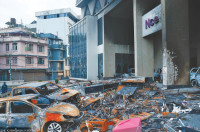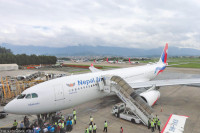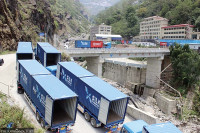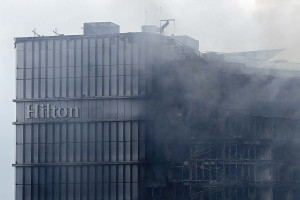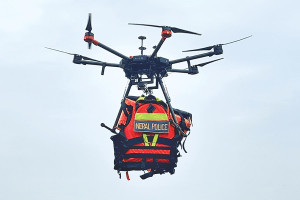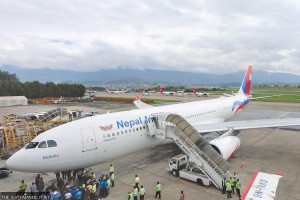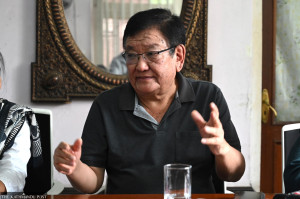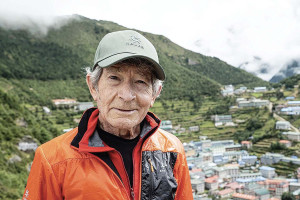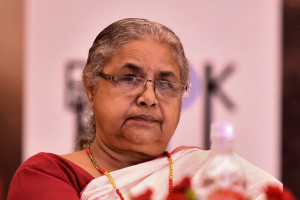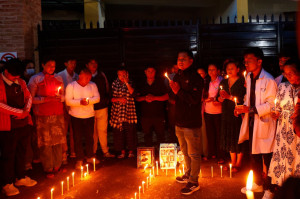Money
After 109 crashes, Nepal orders first independent inquiry
House committee’s ruling will formally open first judicial proceedings in the country’s 71-year aviation history.
Sangam Prasain
Is Nepal set to launch its first judicial inquiry into recent air crashes?
Despite 71 years of aviation history punctuated by 109 air accidents, Nepal has thus far never initiated a judicial or criminal inquiry.
On Thursday, in a landmark move, the parliamentary International Relations and Tourism Committee ordered the government to form an independent inquiry commission to look into the country’s overall air safety standards and recommend action if someone is found guilty, particularly in connection with recent plane crashes.
The parliamentary committee has given the experts commission 15 days to submit a report.
“The two air accidents in two weeks have dented the country's image. We need to find a way to prevent future accidents and bring officials responsible for such utter negligence to justice,” said Raj Kishore Yadav, the committee chairman.
Many lawmakers have echoed these concerns, calling for the prosecution of responsible officials. They have criticised the civil aviation regulator for its apparent negligence.
The order means Nepal has formally initiated judicial proceedings through a separate investigation commission, which can hold the airline companies, the regulator, aircraft manufacturers, pilots, engineers, and others accountable for gross negligence and misconduct that have resulted in loss of life.
“That’s a landmark order. But there are no specific laws in Nepal under which the guilty can be prosecuted,” said Rajan Pokhrel, former director general of the Civil Aviation Authority of Nepal. “The Civil Aviation Act talks about judicial proceedings, but there is no law to enforce them.”
For example, if a government-formed independent investigation commission recommends cancelling an airline company’s licence for gross negligence, there will be a confusion about who will enforce the recommendation.
In Nepal, the results of accident investigations are not admissible in court and do not result in fines or other consequences.
However, in many countries, investigations are typically conducted in two different ways.
For example, in France, a pair of investigations are simultaneously conducted: the judicial investigation is directed by a prosecutor or undertaken under his control, and the safety investigation is conducted by the Bureau d'Enquêtes et d'Analyses (BEA).
These two investigations have different objectives. The judicial inquiry aims to determine fault that may result in liability being established and, thus, convictions.
The BEA investigation aims to improve aviation safety for passengers and crews.
Unlike judicial investigations, the safety investigation does not presuppose the existence of a misdemeanour or a crime.
The BEA investigation follows international rules from the ICAO. The judicial inquiry is based on national law and is undertaken under wildly varying conditions from one country to another.
Thus, in some countries, the judicial investigation only starts after the safety investigation.
Although in France these investigations are independent of each other, the law has determined their relationship. Thus, for example, flight recorders are placed under seal by the judicial authorities and handed to the BEA to be read out under its control.
Further, regular contacts are established between the BEA and the authorities in charge of judicial investigations.
The United States also conducts investigations in two different ways.
In Nepal, under Article 26 of the Chicago Convention on International Civil Aviation, 1944, the government is obliged to institute an inquiry into the circumstances of the accident by the procedure recommended by the International Civil Aviation Organization (ICAO).
Under Nepal’s Civil Aviation (Accident Investigation) Regulations, 2014, which follows Annex 13 to the Convention on International Civil Aviation, the sole objective of investigating an accident or serious incident is to prevent accidents and incidents in the future.
Therefore, Annex 13 investigations do not consider apportioning blame or liability.
Any judicial or administrative proceedings to apportion blame or liability will be separate, as per Nepal’s Accident Investigation Regulations. “The regulations and Act both talk about judicial or administrative proceedings, but there are no particular laws to enforce the results,” says Pokhrel.
However, lawyers say it doesn’t stop them from filing criminal charges and unlimited liabilities.
Amrit Kharel, an advocate who has filed criminal charges against the Civil Aviation Authority of Nepal and Yeti Airlines accusing them of gross negligence that killed 72 people in Pokhara in January 2023, said, “In our territory, it’s our sovereignty to file a case against any misconduct.”
The investigation commission under the ICAO Annex 13 is just a fact-finding committee. “But if any person dies due to negligence, they should not be granted any amnesty,” Kharel says.
Kharel has been fighting the case on behalf of the families of the US-Bangla Airlines Flight 211 that crashed in Kathmandu in March 2018, killing 51 of the 71 people aboard.
Victims have demanded a total compensation worth Rs2.10 billion after the Bangladesh airlines and its insurers and reinsurers failed to provide appropriate compensation.
“The case of Yeti Airlines is also gross negligence by the company and the regulator. A criminal investigation is necessary as negligence is growing in Nepal and innocent people are dying as a result,” Kharel adds.
He said that if the court finds a person or company guilty of a crime, it’s the state’s responsibility to prosecute them. “No separate aviation law is needed to prosecute the guilty.”
On January 15 last year, a Yeti Airlines plane crashed while approaching the new Pokhara airport. The Post also reported that flight calibration, which tests all equipment at the new airport, had yet to recommend landing from the west, the path followed by the Yeti flight.
Experts at the time pointed out that the flight procedure was not published, and the airline had very little information on airport procedures and data.
No evaluation as required by the ‘safety management system’ carried out, either by the civil aviation regulator, as an airport service provider, or by the airline.
“The civil aviation body misused its regulator role to run the airport, neglecting safety requirements. It was a serious crime and mass murder, and subject to criminal investigation,” one aviation expert had said at the time.
Speaking in the House on Thursday, Lawmaker Prabhu Sah said frequent crashes have sent the message that Nepal’s air safety is poor.
“Relevant agencies should be held responsible and accountable for this. We cannot tolerate this any more. Officials take bribes and people die. The government that only takes the onus for positive things should also take responsibility for the growing corruption.”
Though lawmakers who make laws have ordered a separate independent investigation commission to probe the frequent crashes, even if the commision produces the report, experts say, it’s unclear who will implement it.
“Legal proceedings are indeed one of the effective measures to overhaul Nepal’s civil aviation,” said Sanjiv Gautam, former director general of the Civil Aviation Authority of Nepal.
“There are few instances in which courts have prosecuted even the dead pilots for gross negligence.”
In a recent example, Boeing agreed to plead guilty to a US criminal fraud charge stemming from the crashes of two 737 Max jetliners, angering the families of the hundreds of passengers killed who had wanted the case to go to trial.
In October 2018, 189 people were killed when Lion Air Flight 610 fell into the Java Sea off Indonesia. In March 2019, Ethiopian Airlines Flight 302 crashed shortly after taking off from Addis Ababa airport, claiming 157 lives.
Nepal’s civil aviation service started in 1953 with three old American-made DC-3 Dakotas belonging to an Indian company. After five years, the Royal Nepal Airlines Corporation was established.
Nepal’s aviation sector has grown faster than expected, with passenger traffic climbing from one million to 10 million in just over two decades.




 21.12°C Kathmandu
21.12°C Kathmandu

